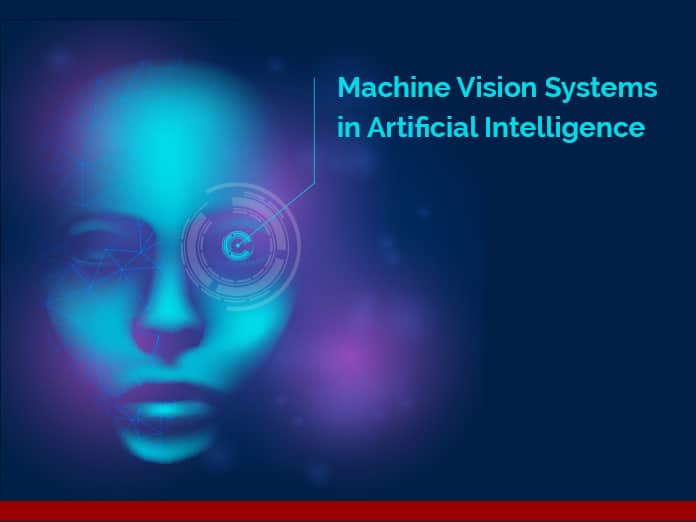In computer science, artificial intelligence (AI), also known as machine intelligence, is the intelligence demonstrated by machines, in contrast to the natural intelligence displayed by humans. In brief, artificial intelligence is a way of making a computer, a computer-controlled robot, or software to think intelligently and act intelligently, in a similar manner, the intelligent human brain thinks.
Jump to Section
Benefits of Artificial Intelligence
- Fast & Accurate Diagnostics: After some studies or research on artificial neural networks, researchers say that it is scientifically proven that neural networks can diagnose fast & accurate diseases like eye problems, malignant melanoma, etc.
- Reduce Human Errors: AI as a superhuman eliminates human error & relieves them of monotonous & time-consuming tasks.
- Cost Reduction: AI assistants provide online care & assist to users to help them by cutting the extra cost.
- Therefore, AI has contributed to all the different industries like Healthcare, Agriculture, Education, Finance, Legal, Manufacturing, Medical, and Oil/Gas.
Machine Vision System (MVS)
A machine vision system is a type of technology that allows a computing device to inspect, evaluate, and identify still or moving images. It is a field in computer vision and is quite similar to surveillance cameras, but provides an automatic image capturing, evaluation, and processing capabilities.
The implementation of AI has advanced the vision system. In other words, AI is used in vision systems for continuous improvement in recognition applications. This could be deployed in the scenario in which vision systems are used for object recognition. Typically, incorrect predictions can be identified and associated with recorded data, so a vision system can continuously learn and improve itself based on its own mistakes.
Use of AI in Vision Applications
One important reason for the use of AI in vision systems is the rise of the industrial internet of things (IIoT). The features of machine-to-machine communication in a highly automated environment IIoT, that’s dependent upon machine vision to identify a wide range of objects throughout the process of the flow of goods within the factory.
Furthermore, a vision system’s ability is to recognize objects, as well as a variety of defects in an object, can significantly improve the accuracy of a vision system. For inspection applications, for instance, this accuracy translates directly into productivity and profitability.
AI Machine Vision Helps Meet Specific Goals as Follows
A machine vision system now does repetitive tasks formerly done manually.
| Strategic Goal | Machine Vision Applications |
|---|---|
| Higher quality. | Inspection, measurement, gauging, and assembly verification. |
| Increased productivity. | |
| Production flexibility. | Measurement and gauging / Robot guidance / Prior operation verification. |
| Less machine downtime and reduced setup time. | Change-overs programmed in advance. |
| More fulfilled information and tighter process control. | Manual tasks can now provide computer data feedback. |
| Reduce capital equipment costs. | Adding vision to a machine improves its performance, avoids obsolescence. |
| Lower production costs. | One vision system vs. many people or the Detection of flaws early in the process. |
| Scrap rate reduction. | Inspection, measurement, and gauging. |
| Inventory control. | Optical Character Recognition and identification. |
| Reduced floor space. | Vision system vs. operator. |
Describing an Example of Machine Vision System (from the Web)
Some of you may have heard about “ALBERT,” which is a complete and independent unit for visual inspection, developed based on the most advanced artificial intelligence techniques.
ALBERT learns the characteristics of a product directly from the production line and automatically assesses its quality. This device is very simple to use and does not require complicated programming procedures by experts; therefore, easily, it is ready to control new products with different characteristics quickly.
Not any traditional machine vision system can analyze complex objects or products with high variability as easy as a human operator would. While, ALBERT, on the other hand, interprets the concept of “quality” as fast as most trained control operators. ALBERT can be customized according to the production requirements of the moment since its “severity” level can be increased or decreased at the touch of a button, thus loosening or tightening the product acceptance criteria.
At any time and with a simple click, ALBERT can learn how to sort a new product or adapt to changing production conditions, and it chooses automatically, which will be the features to monitor that best describes the quality of your products.
Future of Machine Vision
According to s, Machine Vision Online articles by Dr. David Wright (formerly Vice President of Strategic Research at Braintech Inc.) and Gary Wagner (formerly President of Imaging Technology at Coreco Imaging) says about the exploitation of AI in Machine Vision. David Wright said, “Artificial Intelligence-based analysis in vision offers unprecedented flexibility and exploitability in the industry.” Gary Wagner focuses two important points for the widespread acceptance of Machine Vision. First, algorithms need to be adaptive so that they can be easily featured in new products. Second, the systems become more clever that the developer further not required to program and maintain them. For both of these objectives, artificial intelligence came as a solution.
Conclusion
As can be seen from the given examples, the trend of implementing AI in Machine Vision has already started as systems are now available that employ AI to facilitate configuration and also the movement from one task to another. The expectations are these trends will be impacting business intelligence industries and continue to gain momentum in the future too.
Please feel free to share your feedback in the comment section below. Please share it with your friends or on your social handles.
- Business Intelligence Vs Data Analytics: What’s the Difference? - December 10, 2020
- Effective Ways Data Analytics Helps Improve Business Growth - July 28, 2020
- How the Automotive Industry is Benefitting From Web Scraping - July 23, 2020

